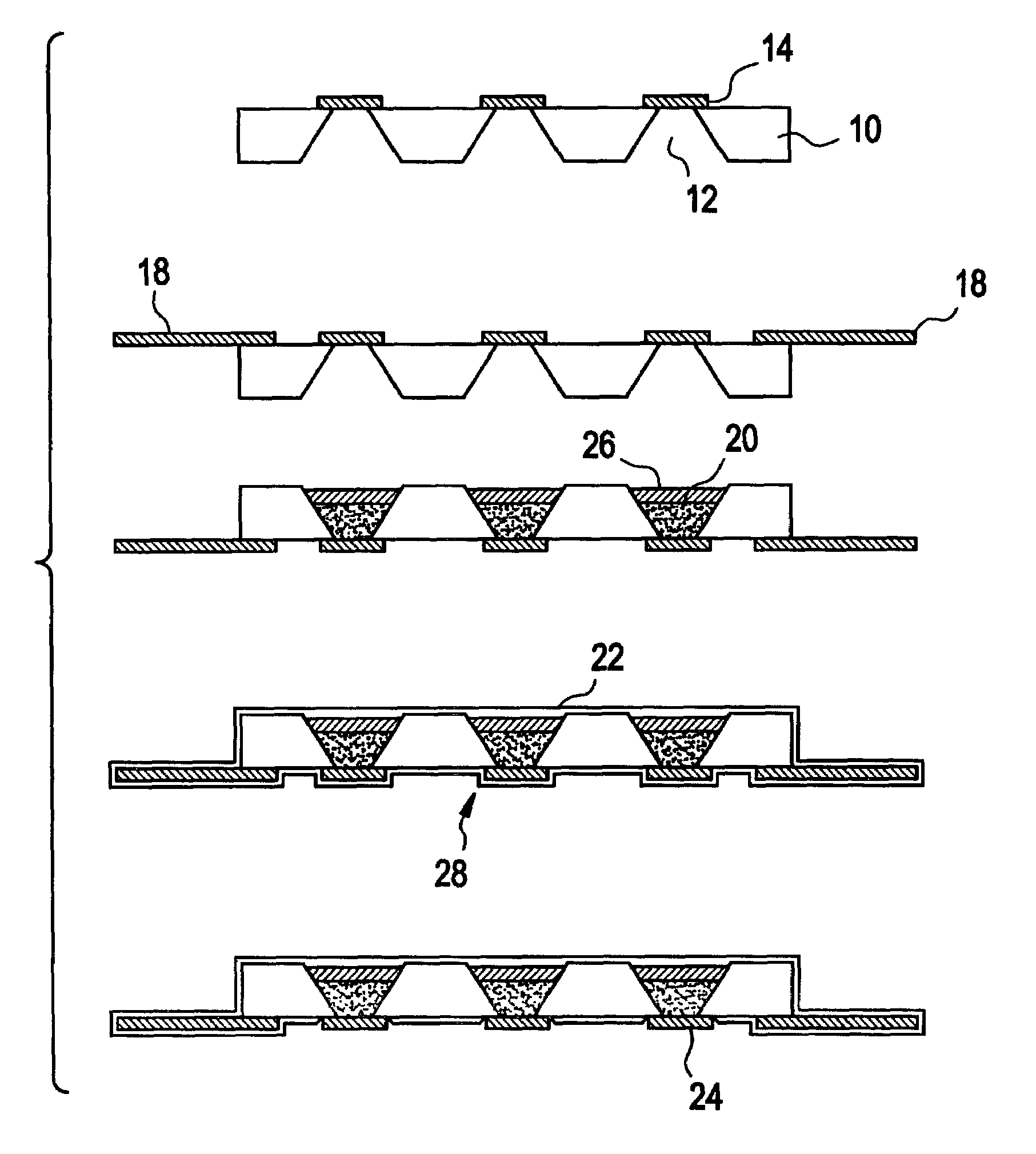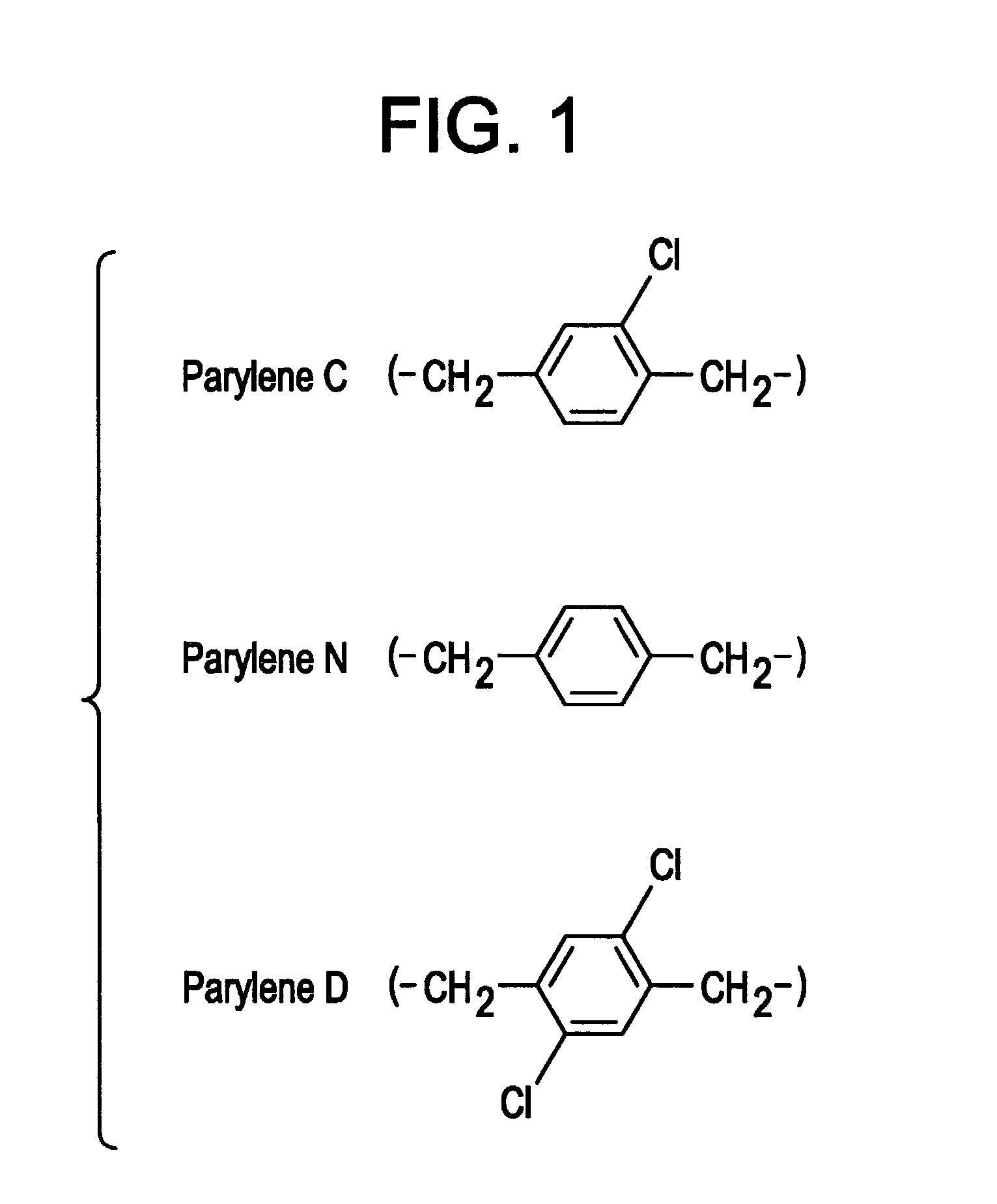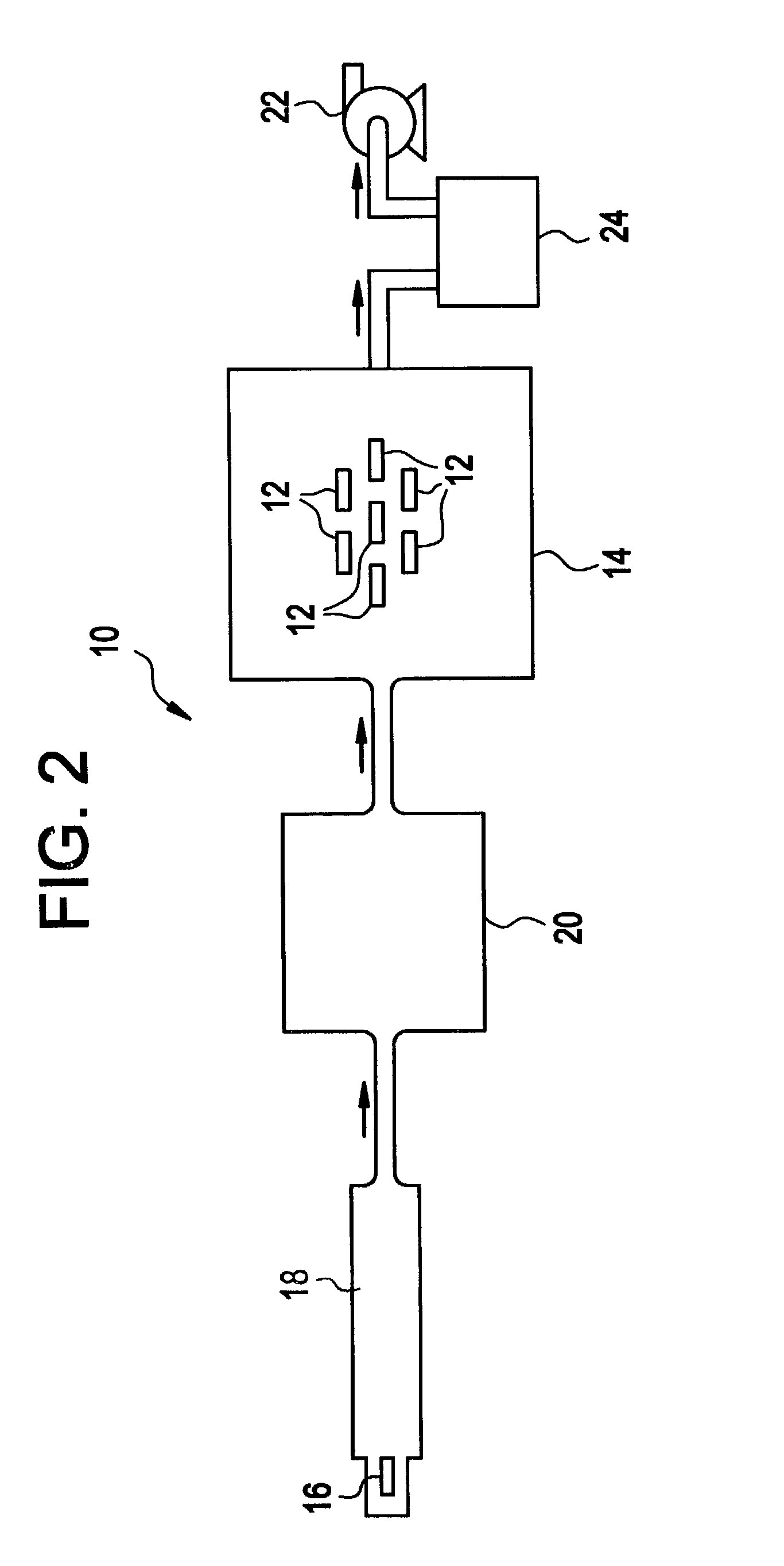Methods for conformal coating and sealing microchip reservoir devices
a microchip and reservoir technology, applied in the field of conformal coating and sealing microchip reservoir devices, can solve the problems of adverse reactions to the reservoir contents, electrical or mechanical damage to the device, and affecting the functioning of the body and/or the device, etc., to achieve the effect of reducing the adverse reaction of the body
- Summary
- Abstract
- Description
- Claims
- Application Information
AI Technical Summary
Benefits of technology
Problems solved by technology
Method used
Image
Examples
example 1
Tape Masking and Parylene Coating a Microchip Device
[0099]This example is described with reference to FIG. 3. A microchip device substrate 10 with reservoirs 12 and gold membrane reservoir caps 14 were prepared using fabrication processes described in U.S. Pat. No. 6,123,861, to Santini, Jr. et al. The front of the microchip substrate, except for the wire bond pads, were masked with a water-soluble tape 16, 3M Mask Plus II Water Soluble Wave Solder Tape No. 5414. The tape 16 served to protect the microchip during assembly and to mask the front of the microchip during parylene coating. The microchip was attached to an assembly consisting of a cable soldered to a printed circuit board carrier (not shown). Connections 18 were made from the bond pads on the microchip to the bond pads on the board using a wire bonder. In this experiment, these wire bonds were protected with epoxy so the microchip could be turned over and leads could be soldered to the back of the printed circuit board. (...
example 2
Parylene Coating Followed by Selective Laser Removal
[0100]This example is described with reference to FIG. 4. The microchip device substrate 10 with reservoirs 12 and gold membrane reservoir caps 14 would be manufactured and mounted to a flexible-circuit carrier as described in Example 1. The connections 18 would be made by wirebonding the microchip bond pads to the exposed leads on the flex circuit. The wirebonds would be protected during reservoir filling. The reservoirs 12 would then filled with a drug 20, and then a wax layer 26 would then added to fill the remaining volume of the reservoirs 12 over the drug 20 before sealing the reservoirs 12 of the device. The entire microchip device package would then conformally coated with parylene 22, consequently sealing reservoirs 12. A contact mask (not shown), which would be made of a metal or another excimer laser-resistant material, would then be placed over the face 28 of the parylene-coated microchip device. A laser would then be d...
example 3
Improved Barrier Properties with a Metal Film
[0101]This example is described with reference to FIG. 5. The microchip device substrate 10 with reservoirs 12 and gold membrane reservoir caps 14 would be manufactured as described in Example 1. This microchip device substrate would then be mounted to a package that has solder bumps placed in a pattern that matches the bond pads on the microchip. The microchip and package would then be brought into contact with each other and the solder bumps heated so they reflow and make electrical connection. The reservoir caps 14 would then be masked. Then the reservoirs would be filled with a drug 20. Next, a first layer 32 of parylene would be conformally coated onto the assembled microchip device. Then a layer of metal film 34, such as aluminum, would be evaporated or sputtered over first parylene layer 32 to form an impermeable barrier. An outer layer 36 of parylene would then be conformally coated over the metal film 32 to provide a biocompatibl...
PUM
| Property | Measurement | Unit |
|---|---|---|
| thickness | aaaaa | aaaaa |
| thickness | aaaaa | aaaaa |
| thickness | aaaaa | aaaaa |
Abstract
Description
Claims
Application Information
 Login to View More
Login to View More - R&D
- Intellectual Property
- Life Sciences
- Materials
- Tech Scout
- Unparalleled Data Quality
- Higher Quality Content
- 60% Fewer Hallucinations
Browse by: Latest US Patents, China's latest patents, Technical Efficacy Thesaurus, Application Domain, Technology Topic, Popular Technical Reports.
© 2025 PatSnap. All rights reserved.Legal|Privacy policy|Modern Slavery Act Transparency Statement|Sitemap|About US| Contact US: help@patsnap.com



